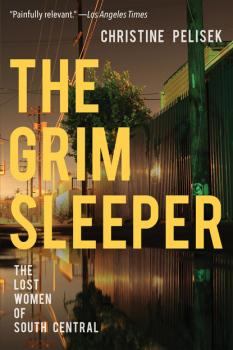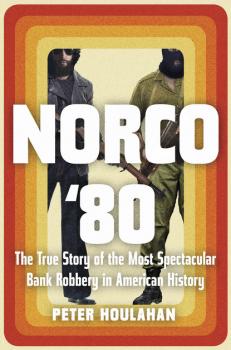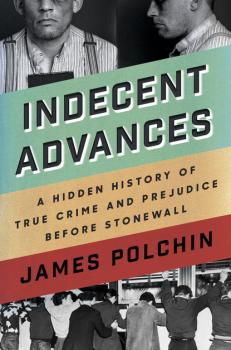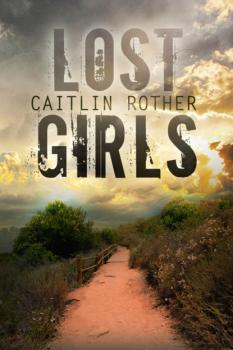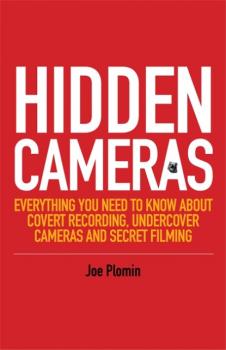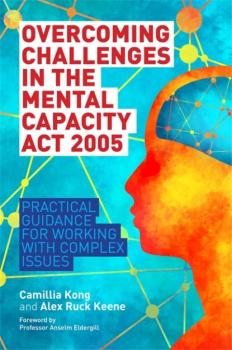ТОП просматриваемых книг сайта:
Юриспруденция, право
Различные книги в жанре Юриспруденция, право, доступные для чтения и скачиванияАннотация
Corporations faced with proof that they are hurting people or the planet have a long history of denying evidence, blaming victims, complaining of witch hunts, attacking their critics’ motives, and otherwise rationalizing their harmful activities. Denial campaigns have let corporations continue dangerous practices that cause widespread suffering, death, and environmental destruction. And, by undermining social trust in science and government, corporate denial has made it harder for our democracy to function.  Barbara Freese, an environmental attorney, confronted corporate denial years ago when cross-examining coal industry witnesses who were disputing the science of climate change. She set out to discover how far from reality corporate denial had led society in the past and what damage it had done.  Her resulting, deeply-researched book is an epic tour through eight campaigns of denial waged by industries defending the slave trade, radium consumption, unsafe cars, leaded gasoline, ozone-destroying chemicals, tobacco, the investment products that caused the financial crisis, and the fossil fuels destabilizing our climate. Some of the denials are appalling (slave ships are festive). Some are absurd (nicotine is not addictive).  Some are dangerously comforting (natural systems prevent ozone depletion). Together they reveal much about the group dynamics of delusion and deception. Industrial-Strength Denial delves into the larger social dramas surrounding these denials, including how people outside the industries fought back using evidence and the tools of democracy. It also explores what it is about the corporation itself that reliably promotes such denial, drawing on psychological research into how cognition and morality are altered by tribalism, power, conflict, anonymity, social norms, market ideology, and of course, money. Industrial-Strength Denial warns that the corporate form gives people tremendous power to inadvertently cause harm while making it especially hard for them to recognize and feel responsible for that harm.  
South China Sea Disputes And The Us-china Contest, The: International Law And Geopolitics - James Chieh Hsiung
Series On Contemporary ChinaАннотация
This book focuses on a region that, next to the Middle East, has become a dragnet of international conflicts in the world. The South China Sea (SCS) region, furthermore, is the subject over which a rumored war may break out between the United States, the extant superpower, and China, an emergent superpower – should the current power transition end up in a Thucydides Trap. The volatility of the situation has gone beyond the long simmering tensions due to overlapping claims by six contending Asian neighbors, to culminate in a nascent crisis surrounding the US-China contest.The book's broad sweep provides a careful examination of two tangles: (i) a legal tangle bedeviling China's relations with other competing claimant nations, and (ii) a geopolitical tangle at the heart of the US-China contest, arising from America's instinctual response to the China-threat scare trumpeted by neorealist analysts and media gurus as well. The book reviews what general international law has to say on 'historic waters', which is the basis of China's claim, in its disputes with its contending neighbors. It also examines the background of the China-threat scare, to see if it has any merit, in light of both the shifts in the running China debate and the evidence of China's might and intentions.The book's final part explores a possible way out of the two tangles, in the interest of arriving at a reconciliation of the tensions and conflicts associated with the SCS, so that the United States and China can meet each other across the divide for the sake of a new era of public order, presumably under a condominium they can build together.
Аннотация
"This upsetting account of a Los Angeles serial killer, written with passion by Christine Pelisek, an investigative crime reporter who spent 10 years working the case, blurts out a hard truth that no one wants to acknowledge . . . [She] tries to restore dignity to some of the victims by drawing sympathetic and carefully detailed life histories for each and every one of them." —Marilyn Stasio, New York Times Book Review The Grim Sleeper is one of the most brutal serial killers in L.A. history, preying on the women of South Central for decades. No one knows this story better than Christine Pelisek, the reporter who followed it for more than ten years. Based on extensive interviews, reportage, and information never released to the public, The Grim Sleeper captures the long, bumpy road to justice in one of the most startling true crime stories of our generation.
Аннотация
One of NPR's Best Books of the Year [b]"Gripping. . . [R]eads like a crime novel in the best way possible. . . Norco '80 is a fascinating true-crime account that seems likely to be one of the best nonfiction books of the year." —NPR “[An] alarming account of a bank heist that rocked the country in 1980. . . For a first-time writer, Houlahan sure knows how to dramatize a scene. His cinematic treatment of the robbery itself reads like wildfire, the fatal shootout with the police ends in colorful chaos, and the huge manhunt through San Bernardino National Forest conducted by ‘Hunt & Kill Teams’ is a nail-biter.” — The New York Times Book Review [/b] Norco ’80 tells the story of how five heavily armed young men—led by an apocalyptic born-again Christian—attempted a bank robbery that turned into one of the most violent criminal events in U.S. history, forever changing the face of American law enforcement. Part action thriller and part courtroom drama, Norco ’80 transports the reader back to the Southern California of the 1970s, an era of predatory evangelical gurus, doomsday predictions, megachurches, and soaring crime rates, with the threat of nuclear obliteration looming over it all. In this riveting true story, a group of landscapers transformed into a murderous gang of bank robbers armed to the teeth with military-grade weapons. Their desperate getaway turned the surrounding towns into war zones. When it was over, three were dead and close to twenty wounded; a police helicopter was forced down from the sky, and thirty-two police vehicles were destroyed by thousands of rounds of ammo. The resulting trial shook the community to the core, raising many issues that continue to plague society today: from the epidemic of post-traumatic stress disorder within law enforcement to religious extremism and the militarization of local police forces.
Аннотация
Blends true crime, cultural history, queer history, and propulsive narrative nonfiction to publish in time for the 50th anniversary of the Stonewall Riots (June 2019) A debut for fans of the podcasts «My Favorite Murder» or Malcolm Gladwell's «Revisionist History» The book documents the media coverage of forgotten crimes involving queer men between World War I and the Cold War. In recovering a host of accounts of men found stabbed, shot, or assaulted in hotel rooms, apartments, public parks, and subway bathroom stalls, the book demonstrates how crime newspaper stories were part of a larger constellation of cultural values, journalistic standards, and political trends. From sensationalized front-page murders to more minor stories of assaults, Indecent Advances illuminates how queer crimes were viewed by the media, psychologists, criminologists, and writers within the era. In telling the story of how homosexuals were criminalized in the popular imagination, from the sex panics of the 1930s, to Kinsey study of male homosexuality of the 1940s, and the Cold War panic of Communists and homosexuals in government, the book illustrates the vital role crime stories played in circulating ideas of normalcy and deviancy, and, importantly, how they also helped shape a burgeoning gay rights movement in the years leading up to Stonewall. The author originally had the idea for this book decades ago, but it was only as newspaper archives became widely digitalized did the scope of the project become possible. What seemed like a small cluster of crime stories in big city newspapers, transformed into an ever-growing archive of murders and assaults with a disturbing and dizzying effect.
Аннотация
Praise for Caitlin Rother and her true-life thrillers "Will keep you on the edge of your seat."–Aphrodite Jones"An exciting page-turner."–M. William PhelpsChelsea King was a popular high school senior, an outstanding achiever determined to make a difference. Fourteen-year-old Amber Dubois loved books and poured her heart into the animals she cared for. Treasured by their families and friends, both girls disappeared in San Diego County, just eight miles and one year apart. The community's desperate search led authorities to John Albert Gardner, a brutal predator hiding in plain sight. Now Pulitzer-nominated author Caitlin Rother delivers an incisive, heartbreaking true-life thriller that touches our deepest fears. «Rother is one of the best storytellers in true crime.» –Steve Jackson Includes dramatic photos
Аннотация
В книге разобраны некоторые вопросы практической юриспруденции, связанные с получением гражданами услуг в области здравоохранения.
Аннотация
The complete and authoritative guide to the use of hidden cameras to expose abuse or wrongdoing. Secret filming is no longer the preserve of specialists, professional journalists and private investigators. Drawing on the author's own experience producing undercover documentaries and wearing secret cameras, this book explains covert recording for the general public, including specific advice on the practicalities of using a phone or covert camera to record evidence. It considers the legal and ethical issues and provides vital information for anyone who may use or encounter secret filming, including the people or organisations that might be filmed, regulators, social workers, local government officials and anyone who may encounter it in court. It also looks to the future of covert filming and the implications of technological advances, such as drone cameras.
Аннотация
This book provides mental capacity practitioners with accessible ethical guidance and applicable tools for applying the Mental Capacity Act (MCA) 2005. It shows how clients' relationships can impact their capacity in positive and negative ways, and which communication skills practitioners can use to enable and empower those with impairment. It also covers how to engage in self-reflection and transparent debate about values to improve the quality of assessments. Helping practitioners interpret complex issues of mental capacity in the most beneficial way for clients, this book is essential reading for students and practitioners of law, medicine, mental health services and social care.



